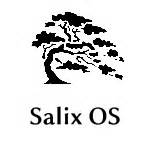[catergory Desktop Linux]
Admittedly not a fan of “newbie-friendly” Linux distros like I am, this respected reviewer had such a bad experience with the newest version of Linux Lite that his friends came close to having an “intervention” for him to preserve his sanity! Read about my friend Renard’s close call here.
I have described Linux Lite in the past as “Xubuntu done right” and lauded it’s efforts to attract users from Windows as being even better than Linux Mint’s, because of the very cool tool box it has, always being improved upon and expanded. I’m still a fan of “newbie-friendly” desktop Linux distributions like Linux Lite, but definitely not a fan of Google’s ecosystem, nor of Ubuntu’s weird turn to snaps as default packaging, it’s “ads” appearing in the terminal, and some other corporate decisions that put it on par with Microsoft and Apple in terms of commercial and proprietary policies.
Most of the Linux Lite users who were around when I first discovered Linux Lite and became a fan have moved on to Debian-based Linux OSes like MX-Linux (awesomeness on steroids) or even Bunsen Labs (Debian Openbox, the “heir of Crunchbang Linux”). I think I’m the only one among that group who went off to the Slackware universe with SalixOS. Among these, MX-Linux is the only one I would consider “newbie-friendly.” But one thing they all have in common is that they’re not based and built on Ubuntu. Most of the most popular “newbie-friendly” distros like Linux Mint, Zorin, ElelmentaryOS, and Pop!OS are Ubuntu-based, and most of them have disabled snap packaging and some of the other objectionable stuff from upstream Ubuntu.
But if you want Firefox in Linux Lite and don’t want to use a PPA (or don’t know how), Linux Lite offers Firefox as a snap package. Ewww. No thanks!
I remain a  (I even made a userbar for their forum!), but my copy is so highly modified from the defaults that I only recommend my own modified version of it for newbies – and that just for the cool tools it offers. It’s the version of Linux Lite that I copy and share with others. Snaps disabled, Brave browser or Seamonkey instead of Google Spyware’s Bovine Excrement Browser, etc. The last decent version of Linux Lite was 5.8 in my opinion.
(I even made a userbar for their forum!), but my copy is so highly modified from the defaults that I only recommend my own modified version of it for newbies – and that just for the cool tools it offers. It’s the version of Linux Lite that I copy and share with others. Snaps disabled, Brave browser or Seamonkey instead of Google Spyware’s Bovine Excrement Browser, etc. The last decent version of Linux Lite was 5.8 in my opinion.












 Adding a new panel to the bottom is not possible. The panel has to go on the right or left side, period. I don’t think that’s an LXDE thing, since it has always been possible to put a panel anywhere I wished before now. My desktop has a wicked-kewl Xfce panel on the bottom with just launchers, analog clock (unavailable in LXDE) and weather applet (also unavailable in LXDE).
Adding a new panel to the bottom is not possible. The panel has to go on the right or left side, period. I don’t think that’s an LXDE thing, since it has always been possible to put a panel anywhere I wished before now. My desktop has a wicked-kewl Xfce panel on the bottom with just launchers, analog clock (unavailable in LXDE) and weather applet (also unavailable in LXDE). The weather applet is LXLE is unsupported and doesn’t work. I think I read somewhere that it has been forked, and the new one might work, but it isn’t included or listed among available applets for the panel. Not a deal breaker, as the user doesn’t even care about that since she goes to the web for weather and stuff anyway.
The weather applet is LXLE is unsupported and doesn’t work. I think I read somewhere that it has been forked, and the new one might work, but it isn’t included or listed among available applets for the panel. Not a deal breaker, as the user doesn’t even care about that since she goes to the web for weather and stuff anyway. Whatever they did to Seamonkey – in my opinion the best web browser – on LXLE rendered it impossible to use on this ancient relic. The visible browser screen takes only a third of the screen and won’t expand to a viewable area. It’s faster than Chromium, which is what I installed after experimenting with Epiphany for a bit. Midori is still buggy and crashy, and Epiphany is just okay. Soooooo… I dropped all the extensive and abundant modifications and reset Seamonkey to the ordinary defaults from Mozilla, and bingo! Zips along faster than Chromium or Firefox, and it’s more reliable than crashy Midori and just-okay Epiphany.
Whatever they did to Seamonkey – in my opinion the best web browser – on LXLE rendered it impossible to use on this ancient relic. The visible browser screen takes only a third of the screen and won’t expand to a viewable area. It’s faster than Chromium, which is what I installed after experimenting with Epiphany for a bit. Midori is still buggy and crashy, and Epiphany is just okay. Soooooo… I dropped all the extensive and abundant modifications and reset Seamonkey to the ordinary defaults from Mozilla, and bingo! Zips along faster than Chromium or Firefox, and it’s more reliable than crashy Midori and just-okay Epiphany.


